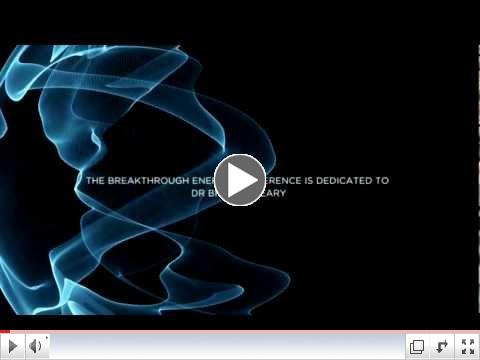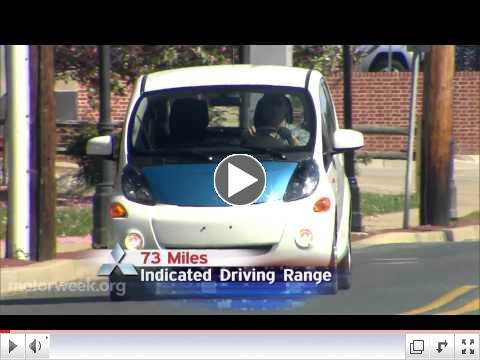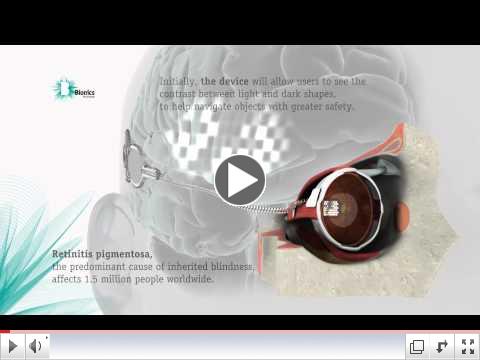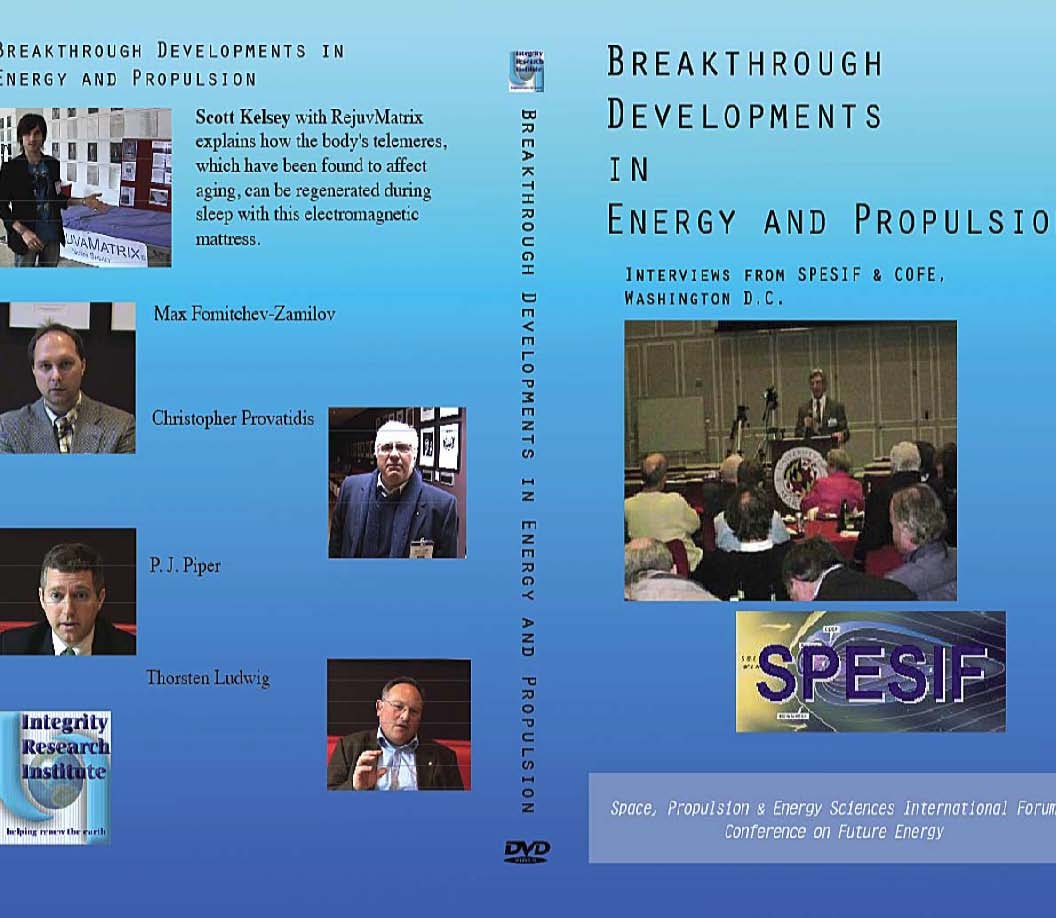|
|
|
Dear
Subscriber,
This
month we would like to let you know about the World Energy
Engineering Congress (Oct. 31-Nov. 2, 2012) at the Georgia World
Congress Center with Colin Powell and Ted Koppel as featured
speakers. For energy professionals, visit www.energycongress.com in addition to
the Netherlands'www.globalBEM.com reported on last
month where I will be in attendance and presenting two slideshow
lectures. Also, this month
thermoelectrics set a new record with the highest heat-to-electricity
energy conversion efficiency (2.2) yet attained at temperatures near
600C with PbTe at Northwestern University (Nature, DOI: 10.1038/nature11439).
When converting from one form of energy to another, the Carnot
efficiency physics can keep changing!
Our
Story #1 answers the frequent request that we hear for do it yourself
energy solutions. Instead of letting 90% of our domestic energy come
from non-renewable sources, community power is the mantra for the new
book, Power From the People by energy expert, Greg Pahl,
in order to increase energy efficiency and community resilience.
When
we noticed that the engineering group IEEE did a comparison of the
two candidates' energy policies, it seemed newsworthy enough to
reprint it for our readers in Story #2. It also contains links to the
supporting documents that explain more of each position summarized in
the article, along with a related article on
wind energy politics.
An
exciting big breakthrough
for our Star Trek fans is the new theoretical support for a warp
drivein Story #3 which seems to overcome the earlier energy-guzzling
warp drive estimate by Miguel Alcubierrewho
even made an appearance on Misho Kaku's "Sci Fi Science"
TV series(this
SciFi website link has great 2 minute excerpts of each episode). Now
at the U of Mexico, Dr. Alcubierre modified relativistic equations
after watching Star Trek as a student to predict faster-than-light
travel without violating physics.
The new estimatesin Story #3 however,
put the drive into the realm ofmore
reasonable energy possibilities.IRI
has been on the cutting edge of this trend in space technology for
years.The 2011 recipient of the "Integrity in Research
Award" went to David Froning, whose pioneering work
on "vacuum engineering" with electromagnetism for
propulsion and power using contra-wound toroidal coils has made
groundbreaking finds which have long range implications for space
travel and gravity modification (his paper in the IRI COFE3
Proceedings is a good summary of his work) with reasonable, instead
of unreachable power requirements.IRI wished to recognize the hard work that David Froning has
done for years to bring scientific integrity to engineering of the
vacuum, which is one of the most challenging projects any physicist
can undertake.David Froning's Quantum Ramjet
is based on zero point energy modifications to the permittivity and
permeability of the vacuum, which as the article link explains, was
surprisingly was motivated by the Billy Meier UFO books about the
Pleideans (I have four of them).
Ever
wonder how an electric car can compete with a high mileage hybrid in
mpg? Our Story #4 direct from the famous TV show MotorWeek explains
the MPGe or Miles Per Gallon Equivalency that now evens the playing
field between the two divers styles of autos. We feature the one car
that has the highest MPGe (112 MPGe) of all the EVs on the market
putting gasoline cars to shame.
In
a breakthrough for bioelectromagnetics,Story
#5 examines the world first bionic implant for a blind woman, which
already stimulates her visual cortex nerves. In the coming decade, it
is hopeful that part of a blind person's vision can be restored with
this new bioelectric device.
Sincerely,
Thomas
Valone, PhD, PE.
Editor
|
|
|
QUICK LINKS
|
|
LIKE US ON FACEBOOK AND GET
10% OFF ANY ITEM IN OUR CATALOG!
 
|
|

|

|
|
Breakthrough
Energy Movement Conference 2012 Holland
|
|
|
|
|
1) Power from the People: How to
Organize, Finance and Launch Local Energy Projects
|
by Greg Pahl,
Foreword by Van Jones, released 9/4/12, Daniel Lerch, Post
Carbon Institute <newsletter@postcarbon.org> http://www.chelseagreen.com/bookstore/item/power_from_the_people?p=add
Is it possible to "relocalize"
energy? This is a critical question that must be addressed if we are
to achieve true global resilience.
In our brand new book
(September 4, 2012), Power From the People, energy expert Greg
Pahl decisively argues that the answer is YES.

Power From the
People is the second book in our Community Resilience Guides
series, The book illustrates how communities across the country are
already generating their own energy at the local level. From
citizen-owned wind turbines to co-op biofuel producers to
community-wide initiatives combining multiple resources and
technologies, Pahl outlines the steps necessary and plan, organize,
finance and launch community energy projects.
The book showcases over
25 real-life examples of local energy projects, offering a range of
challenges and solutions that can be adapted and reapplied.
"Talk about
down-and-dirty. Or rather, down-and-clean! Here's the actual useful
detail on how to do the stuff that really needs doing. Read it and
get to work!"
-Bill McKibben, author
of Eaarth: Making a Life on a Tough New Planet
More than ninety percent
of the electricity we use to light our communities, and nearly all
the energy we use to run our cars, heat our homes, and power our
factories comes from large, centralized, highly polluting,
nonrenewable sources of energy.
It doesn't have to be
that way. In Power from the People, energy expert Greg Pahl
explains how American communities can plan, finance, and produce
their own local, renewable energy that is reliable, safe, and clean.
Pahl uses examples from
around the nation and the world to explore how homeowners, co-ops,
nonprofits, governments, and businesses are already putting power in
the hands of local communities through distributed energy programs
and energy-efficiency measures.
Renewable, community
power is a necessary step on the path to energy security and
community resilience, particularly as we face peak oil, cope with
climate change, and address the need to transition to a more
sustainable future.
This book-the second in
the Chelsea Green Publishing Company and Post Carbon Institute's
Community Resilience Series (http://www.resilience.org/guides)-also
profiles numerous communitywide initiatives that can be replicated
and scaled broadly.
Greg Pahl
Greg
Pahl is the author of numerous books on energy and also writes
for Mother
Earth News and
various other publications on biodiesel, wind power, wood heat, solar
energy, heat pumps, electric cars, and a wide range of other topics
related to living in a post-carbon world.
His
books include Biodiesel:
Growing a New Energy Economy (2005, Chelsea
Green), Natural
Home Heating: The Complete Guide to Renewable Energy Options (2003,
Chelsea Green), The
Complete Idiot's Guide to Saving the Environment (2001,
Macmillan/Alpha Books), and The
Unofficial Guide to Beating Debt (2000, IDG Books).
Pahl
has been involved ...
View Greg's full
profile page >
back to table of
contents
|
2)
Energy Innovation under Obama and Romney
|
|
KEVIN BULLIS Thursday,
September 6, 2012 Technology review
Both candidates say they
support renewable energy. Romney, though, would do little to create
markets for it.
The
energy positions of the presidential candidates and their respective
parties have come into focus more sharply over the last two weeks.
The Republicans and Democrats have both published their platforms,
and the Republican nominee, Mitt Romney has published his energy
plan.
For
campaigns that have been at each other's throats on many issues,
there's a surprising overlap between the rhetoric of Romney and
President Obama on energy-both favor "all-of-the-above"
approaches that include domestic energy sources such as fossil fuels
and renewable energy. Both support funding energy research and
development through organizations such as the Advanced
Research Projects Agency for Energy (ARPA-E). Both talk
up the possibility of energy independence, and bewail the inability
of every president since Richard Nixon to achieve it.
The
candidates differ markedly, though, when it comes to creating a
market for new energy technology. Obama supports policies that would
create markets for new technologies, and Romney, by and
large, doesn't.
Specifically, Obama supports clean energy standards,
fuel economy standards, and U.S. Environmental Protection Agency
regulations covering carbon-dioxide emissions, all of which
would create markets for new technology, whether it be solar panels,
more efficient engines, or technology for reducing smokestack
emissions. (See his "Blueprint
for a Secure Energy Future.") This is
all justified in part by the desire to create jobs but also by
concern over climate change-something Obama doesn't emphasize in
speeches, but has emphasized in key policies designed to lower
carbon-dioxide emissions.
His
party's take on climate change is even more emphatic. The Democratic
platform released this week strongly emphasizes climate change.
"We know that global climate change is one of the biggest
threats of this generation-an economic, environmental, and national
security catastrophe in the making. We affirm the science of climate
change, commit to significantly reducing the pollution that causes
climate change, and know we have to meet this challenge by driving
smart policies that lead to greater growth in clean energy
generation." (See the2012
Democratic National Platform.)
Romney,
in contrast, opposes a number of policies designed to create markets
for new energy technology. He urges Congress to remove the EPA's
mandate to regulate carbon-dioxide emissions, and he's come out
against new fuel-economy standards issued by the Obama
administration, arguing that they might require consumers to buy
technology they don't necessarily want.
Based
on what he says in his energy policy paper, Romney would promote
markets for new energy technology only indirectly-by funding research
and reducing regulation that could make some technology cheaper, and
perhaps fuel demand. (See "The Romney Plan for a Stronger Middle
Class: Energy Independence.") Clearing the way for
more oil drilling might help decrease prices-although prices are influenced
by many factors. If prices were to drop, that could increase the
market for oil and, by extension, for novel drilling and extraction
technologies used to get at unconventional sources such as shale oil.
Renewable energy
would have a harder time of it. Solar and wind power are generally
more expensive than the fossil fuels they compete with. These
renewable industries have grown because of government help-tax
credits and renewable energy standards, for example-that have created
a market and helped offset the price difference. Romney has been
critical of grants and tax incentives for such
technology. Romney also comes out against federal
loan guarantees to help bring technology from a small-scale
demonstration phase to large scale commercial production-the sort of
funding that went to Solyndra, the failed solar panel maker.
"There is a place for government investment when time horizons
are too long, risks too high, and rewards too uncertain to attract
private capital. However, much of our existing energy R&D budget
has been devoted to loan guarantees, cash grants, and tax incentives
for projects that might have gone forward anyway," his policy
paper says. Instead, he urges support only for basic research and
small-scale demonstrations.
Related Article
Unusual
Coalitions Clash Over Wind Energy Tax Credit, Washington Post, Sept
20, 2012
http://www.washingtonpost.com/national/health-science/unusual-coalitions-clash-over-wind-energy-tax-credit/2012/09/20/fd775f1a-01c7-11e2-b257-e1c2b3548a4a_story.html
back to table of contents
|
3) The
Warp Drive Could Become Science Fact
|
|
DISCOVERY NEWS | SEPTEMBER 17, 2012
http://pulse.me/s/dogHz
A
warp drive to achieve faster-than-light travel -- a concept
popularized in television's Star Trek -- may not be as unrealistic as
once thought, scientists say.

A warp drive would manipulate
space-time itself to move a starship, taking advantage of a loophole
in the laws of physics that prevent anything from moving faster than light. A concept
for a real-life warp drive was suggested in 1994 by Mexican physicist
Miguel Alcubierre, however subsequent calculations found that such a
device would require prohibitive amounts of energy.
Now
physicists say that adjustments can be made to the proposed warp
drive that would enable it to run on significantly less energy,
potentially bringing the idea back from the realm of science fiction
into science.
SLIDE SHOW: Introducing the Warpship
"There is hope," Harold "Sonny"
White of NASA's Johnson Space Center said Friday (Sept. 14) at the 100 Year Starship Symposium, a
meeting to discuss the challenges of interstellar spaceflight.
Warping Spacetime
An
Alcubierre warp drive would involve a football-shape spacecraft
attached to a large ring encircling it. This ring, potentially made
of exotic matter, would cause space-time to warp around the starship,
creating a region of contracted space in front of it and expanded
space behind.
Meanwhile, the starship itself would stay
inside a bubble of flat space-time that wasn't being warped at all.
"Everything
within space is restricted by the speed of light," explained
Richard Obousy, president of Icarus Interstellar, a non-profit group
of scientists and engineers devoted to pursuing interstellar
spaceflight. "But the really cool thing is space-time, the
fabric of space, is not limited by the speed of light."
With
this concept, the spacecraft would be able to achieve an effective
speed of about 10 times the speed of light, all without breaking the
cosmic speed limit.
The
only problem is, previous studies estimated the warp drive would
require a minimum amount of energy about equal to the mass-energy of
the planet Jupiter.
ANALYSIS: Warp Drives: Making the 'Impossible'
Possible
But
recently White calculated what would happen if the shape of the ring
encircling the spacecraft was adjusted into more of a rounded donut,
as opposed to a flat ring. He found in that case, the warp drive
could be powered by a mass about the size of a spacecraft like the
Voyager 1 probe NASA launched in 1977.

WATCH VIDEOS:
SPACEFLIGHT AND EXPLORATION
Furthermore,
if the intensity of the space warps can be oscillated over time, the
energy required is reduced even more, White found.
"The findings I presented today change it from
impractical to plausible and worth further investigation," White
toldSPACE.com. "The additional energy reduction
realized by oscillating the bubble intensity is an interesting
conjecture that we will enjoy looking at in the lab."
Laboratory Tests
White
and his colleagues have begun experimenting with a mini version of
the warp drive in their laboratory.
They
set up what they call the White-Juday Warp Field Interferometer at
the Johnson Space Center, essentially creating a laser interferometer
that instigates micro versions of space-time warps.
"We're
trying to see if we can generate a very tiny instance of this in a
tabletop experiment, to try to perturb space-time by one part in 10
million," White said.
He
called the project a "humble experiment" compared to what
would be needed for a real warp drive, but said it represents a
promising first step.
ANALYSIS: Interstellar Travel Is Hard, Why
Bother?
And
other scientists stressed that even outlandish-sounding ideas, such
as the warp drive, need to be considered if humanity is serious about
traveling to other stars.
"If
we're ever going to become a true spacefaring civilization, we're
going to have to think outside the box a little bit, were going to
have to be a little bit audacious," Obousy said.
You can follow SPACE.com assistant managing editor Clara
Moskowitz on Twitter @ClaraMoskowitz. FollowSPACE.com on Twitter @Spacedotcom. We're also on Facebook & Google+.
back to table of contents
|
4)
Mitsubishi EV Vehicle with the Highest MPGe
|
Motorweek Setptember 2012
http://www.motorweek.org/reviews/road_tests/2012_mitsubishi_i
|

|
|
Road Test: 2012 Mitsubishi I
|
Mitsubishi is no stranger to
electric cars. They've been selling their tiny i-Miev EV in Japan and
Europe since 2009. We even tried a pretty bare bones right hand drive
model about a year ago. Well, now the US-spec Mitsubishi I model has
arrived. It's bigger, much better equipped, and is the least
expensive highway-going EV you can buy. So, let's see if the
"i" has it all.
Well, one thing that the 2012
Mitsubishi i certainly has is a unique appearance. Sort of
hard-boiled egg meets the Jetsons. Though the enlarger U.S.-spec i
5-door does have more presence. Whether you like it or loath it will
pretty much depend on which side of the "Hey look at me and what
I'm doing for the environment" fence you fall on.
The i's 10 inches of added
length, and 4 inches of increased width is accompanied by new front
and rear bumpers re-designed to pass U.S. safety regs. With the huge
windshield small vertical hood, and thin bubble headlights, the front
end is indeed futuristic looking. Standard 15-inch wheels are pushed
to the corners, with exaggerated fenders surrounding them. Our test
car's attention grabbing graphics aren't included although some
owners might want them! And the charging port is located on the right
rear fender.
The i's 16kWh lithium-ion battery
pack is located low in the car's chassis, helping keep the center of
gravity near to the ground and interior room maximized. The rear
mounted, rear-wheel drive 49kW electric motor is rated at
66-horsepower and 145 pound feet of torque. So, we weren't expecting
lightning fast acceleration and an uninstrumented 13.5 seconds to 60
miles per hour certainly isn't.
In government testing the i
achieved a real world driving range of 62 miles, which is less than
the Nissan Leaf or Ford Focus Electric; our i indicated 73 miles when
fully charged. A full charge takes 7 hours with 240 volts, up to 22
hours using 120, with a cost of about $3.
Inside the new i's wider cabin we
quickly notice more space between the seats, with a re-designed
console set between, and a normal looking shifter. The seats are
cloth and a little utilitarian in feel, but comfortable enough to
ride out the full EV range. Driver's seat heat is standard. Gauges
are EV-specific and include a power meter, as well as an info center
with large distance to empty readout. Rear seats are hard, but with
more length there's plenty of room for 2, and seat backs fold 50/50,
to expand the 13.2 cubic-feet of trunk space to a very useful
50.4.
A key fob remote allows you to
monitor the state of the charge, and pre-heat or cool the cabin. Now,
other EV's offer similar features but require an app for a smart
phone.
In typical EV fashion, driving
the i takes a little getting used to, but we found the power
adequate, and the ride smooth. Steering is very low effort, making
low speed maneuvers a dream. The usual instant EV torque seems a
little muted compared to other recent EV's we've driven, but the i
has no problems getting in to the flow of highway traffic. Top speed
is 80.
The additional size has gone a
long way towards making the i feel more like a real car. It drives
more substantial and less like an EV commuting device. Government
Fuel Economy Miles Per Gallon Equivalency Ratings are 126-City,
99-Highway, and 112-Combined. That's better than either the Leaf or
Focus Electric. The i's base price also bests them at $29,975.
Government tax credits can reduce that by up to a third or better;
our well equipped SE begins at $31,975.
As more EVs emerge and
competition grows, they will continue to gain efficiency with shorter
charging times. And, like the 2012 Mitsubishi i, become cheaper to
buy and attainable by more consumers. The i may not quite have it
all, but it does have the lowest price and best MPGe rating of any 4
or 5 passenger pure electric going. And that's certainly enough to
make the i a serious EV player.
For more information:
www.motorweek.org
|
5)
Bionic Implant for Blind Woman
|
SINGULARITY HUB | SEPTEMBER 14, 2012
In what's being claimed a world first, doctors have implanted a
bionic eye into a woman, allowing her to see flashes of light. The
early stage prototype performed well as a proof-of-principle,
offering hope to blind people around the world that bionic implants
could restore part of their vision in the coming decade.
 Dianne
Ashworth's vision was severely impaired due to retinitis pigmentosa, an inherted disease that
damages the retina. A technology enthusiast herself, she eagerly
volunteered to undergo the first surgery of its kind in hopes that
her vision might be restored. Dianne
Ashworth's vision was severely impaired due to retinitis pigmentosa, an inherted disease that
damages the retina. A technology enthusiast herself, she eagerly
volunteered to undergo the first surgery of its kind in hopes that
her vision might be restored.
The rationale behind
the bionic implant is to replace the damaged retinal cells with
electrodes that stimulate the nerves which connect to the visual
cortex. A 24-electrode array was placed at the back of the eye just
beneath the retina. From the array a wire extends back and connects
to a device just behind the ear.
The following short
animation gives you a good idea how the devices is implanted.
|

|
|
Bionic Eye - Animation
|
Right now the bionic
implant is specifically targeted toward people with retinitis
pigmentosa and age-related macular degeneration. But as the research
continues, the team hopes that the implant with eventually help
people with other types of visual impairments as well.
Clearly the
technology is a long way from restoring a blind person's vision
anywhere close to the visual acuity of people with normal sight. But Bionic Vision Australia, the consortium of
researchers that developed the implant, has a less ambitious goal
that would nevertheless make a huge difference - to increase a blind
person's mobility. If they could restore sight enough to pick out
edges and objects - see the steps of aflight of
stairs or read large print, for instance - it would allow for much
easier navigation. Just allowing them greater, vision-enabled
mobility would greatly increase quality of life.
The implant surgery
may sound invasive, but according to the surgeons it is a relatively
simple procedure that can be taught easily to surgeons around the
world - good news for blind people outside of Australia. According to the World Health Organization, 39
million people worldwide are blind and another 285 million have low
vision. The present device may be touted as the first bionic implant,
but one notable device has been in development for several years now,
and has already gotten promising results. The Argus has an external,
wearable camera that transmits wirelessly to an array of more than 60
electrodes implanted in the retina. The Argus II wasapproved last year for sale in Europe, and
it is currently being evaluated in clinical trials in the
US. Just as the Australian implant aims to achieve, the Argus has
already been shown to allow the visually impaired to make out the
edges and outlines of shapes.
Whether
or not the bionic implant is a "world's first," as study
participant Penny Allen at the Centre for Eye Research Australia attests, it's
certainly worth getting excited about. Conveying visual input to the
brain any where near as effectively as the retina is an incredibly
difficult technological challenge. The more minds bent on overcoming
that challenge, the better.
|
About Integrity Research Institute
Future Energy eNews is
provided as a public service from Integrity Research Institute,
a Non-Profit dedicated to educating the public on eco-friendly
emerging energy technologies.
FREE copy
of the 30 minute DVD "Progress in Future Energy" is
available by sending an email with
"Free DVD" in subject and mailing address in
body.
Your generous support is
welcome by making a tax deductible donation on
our secure website
|
|
|
|
- Scott Kelsey, Missouri State, explaining Rejuvamatrix, Pulsed EMF
therapy to increase the length of DNA telomeres, which directly
affect our lifespan.
- Max Formitchev-Zamilov, Penn State, discussing Cavitation Induced
Fusion, that will soon provide power generation and heat
production.
- Christopher Provaditis, from Greece, explaining Inertial
Propulsion and who teamed up recently with Boeing for their space
satellites.
- PJ Piper of QM Power, discussing the motor invented by
Charles Flynn, with a revolutionary parallel path that gives
double and triple efficiency.
- Dr Thorsten Ludwig from Germany (GASE) discussing
the mysterious Hans Coler motor that WWII British Intelligence
researched.
|
|
|
|
|
|
![]()




















